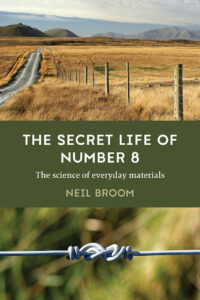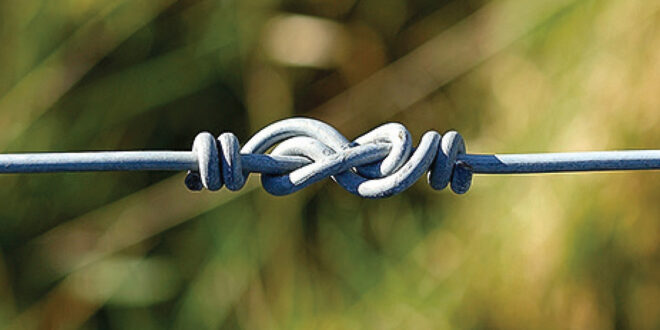 Imagine writing a book that draws its inspiration from a heavily rusted piece of Number 8 fencing wire. This humblest of artefacts was precisely the motivation for the literary birth of The Secret Life of Number 8: The science of everyday materials (Author Neil Broom, Mary Egan Publishing, 2023).
Imagine writing a book that draws its inspiration from a heavily rusted piece of Number 8 fencing wire. This humblest of artefacts was precisely the motivation for the literary birth of The Secret Life of Number 8: The science of everyday materials (Author Neil Broom, Mary Egan Publishing, 2023).
This book takes the reader on a journey into the heart of everyday materials, many have served humanity from ancient times and provided an important foundation for the development of our modern, technologically advanced societies. With the tools of this technology, humans have been able to exercise enormous control over the natural environment, both for good and ill.
Almost daily in the advanced science literature, we read of the development of yet another new and exciting material. The scientific concepts underpinning such developments are, by-and-large, highly complex and beyond the scope of any popular treatment. This book is not about such materials. Rather, it focuses on those part of daily life, materials we can all touch and handle, or at least have some familiarity with.
Avoiding complex scientific language and maintaining a down-to-earth touch, this book provides a non-specialist’s guide to the science of those ordinary materials used to produce the vast array of tools, instruments, components, and structures (both large and small) that have so powerfully shaped how we live in the modern world.
The iconic Number 8 theme links each chapter and is used as a means of introducing key scientific concepts explored in the book. These are always explained in easily understood, down-to-earth language. Employing numerous homely illustrations, the book ‘scratches beneath the surface’ of materials to demonstrate how their underlying structures, right down to the atomic or molecular level, present a fascinating blend of beautiful order and striking complexity. Armed with these insights, the book shows how this structural richness gives rise to a wide range of material properties and characteristics we might either exploit to great benefit or take precautions to avoid.
Questions are addressed such as: What makes some materials strong – even super-strong – but others pathetically weak? Why are some ductile or malleable, whereas, others dangerously brittle? Think of the huge difference in strength between easily bent florist wire and say a piece of piano wire. Think of a nail that buckles annoyingly when hammered into a piece of hard wood. If the nail is withdrawn and re-straightened it can often be hammered ‘home’ successfully. Pure aluminum, although very light, is both extremely weak and highly malleable. The science of how this metal can be rendered so strong it forms the material foundation of modern aviation, is clearly explained. Why does temperature so dramatically alter the properties of many plastics? Why do some have a soft ductile ‘feel’ at room temperature whereas others are quite crackly or brittle? Why is it some metals rust or corrode, but others retain their pristine appearance? Answers to these kinds of questions, and so many more, will be found in this book.
The Number 8 spirit has also been a metaphor for the innovative ‘make-do’ attitude inspired and sustained by so many of our forebears as they laboured to create our modern nation. While we live in a materially wasteful society, this same Number 8 spirit should alert us to the danger of not making the most of our material resources. Our throw-away – discard rather than repair – mentality is simply not sustainable into the future and its consequences are fast catching up on us in so many disturbing ways. We continue to consume massively from nature’s finite larder, overloading the earth’s biosphere with waste and with so little regard for both its health and humanity’s future needs.
It is the author’s hope this book, by unravelling the inner beauty of quite ordinary materials, will rekindle a more responsible attitude to our world’s limited material resources. Instead of uncritically accepting materially wasteful practices, those driven largely by a culture of convenience, we reset our thinking such that ‘material stuff’ is transformed into ‘material treasure’.









Join the Discussion
Type out your comment here:
You must be logged in to post a comment.